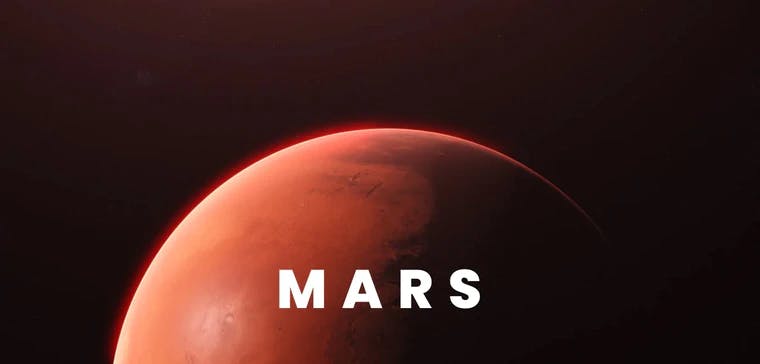GIS
How geospatial technology is vital for exploring Mars

Introduction
One of the natural instincts of humans is to explore. That is what has led our civilization to this point so far. Humans have done their fair bit of exploration on the planet now, and it is time to expand upon this instinct and explore other planets as well.
We all know that NASA is planning a manned mission to Mars in the 2030s. This will be one of the most ambitious missions ever undertaken, but also one of the hardest. The mission will last for three years and astronauts will be working on a small research station on the surface of Mars.
The Red Planet
The Red Planet is an alien world with harsh conditions and extreme temperatures. There's no oxygen, there are dust storms and it can get as cold as -87 degrees Celsius (-125 degree Farenheit). It's going to take a lot of effort for astronauts to survive on Mars long enough to explore its surface.
GIS data can help us understand what kind of terrain we're dealing with, where water might be found, and other useful information that could help us survive there.
Role of GIS Data
GIS data finds use primarily in the following way -
- Identifying safe landing locations and surface hazards
- Ground exploration
- Instantaneous relay of information to Earth
By embracing GIS tools, scientists will be able to create detailed maps of the Martian terrain which will help them plan their missions more effectively as well as determine where would be best to land their rovers and other equipment once they finally reach the red planet. In addition, these systems have many other uses that could prove invaluable when planning future explorations.
GIS companies have developed an innovative 3D map using geospatial data from satellite images captured by MRO (Mars Reconnaissance Orbiter) which provides scientists with valuable information about resources such as minerals and water ice at each site explored by rovers Spirit, Opportunity and Curiosity over the past 17 years. Using this technology it was possible to create beautiful visualizations that could help future explorers plan their missions more effectively while making them feel like they're actually exploring Mars.
Conclusion
With the way things are moving forward, exploration of Mars is more than just a possibility. GIS data in the right hands and if used in the right manner can make this happen sooner rather than later. GIS data in combination with a collaborative geospatial platform can make such farfetched projects easier to manage and realize.
Ellipsis Drive’s simple plug-and-play solution fits the bill for projects of this nature where geospatial data can be viewed and edited instantaneously and simultaneously. With 4 different end points (webviewer, OGC, python package, API), stakeholders of varied levels of technical expertise can easily navigate through geospatial data.
Are you in search of a collaborative geospatial tool like ours? Get in touch with us today.
Liked what you read?

Subscribe to our monthly newsletter to receive the latest blogs, news and updates.
Take the Ellipsis Drive tour
in less than 2 minutes'
- A step-by-step guide on how to activate your geospatial data.
- Become familiar with our user-friendly interface & design
- View your data integration options

Related Articles

Unlocking the Potential of Data: Comparing Tabular and Non-Tabular Protocols
The world of data is a complex landscape and each year, the complexity of that landscape grows exponentially. A combination of new data capturing technology, data processing technology and demands fo
6 min read

Understanding the importance of GIS in Urban Planning
Cities are robust places filled with life, but before it becomes a cosmopolitan paradise, plenty of ever-evolving complexities are happening behind the scenes to bridge the gaps and create an area spa
3 min read

Ellipsis Map Engine: Fast and Easy Spatial Data Science at Scale
In previous articles, we’ve established that raster data is unique compared to other data types which explains why there is a major lack of infrastructure for raster data processing. Raster data is
4 min read